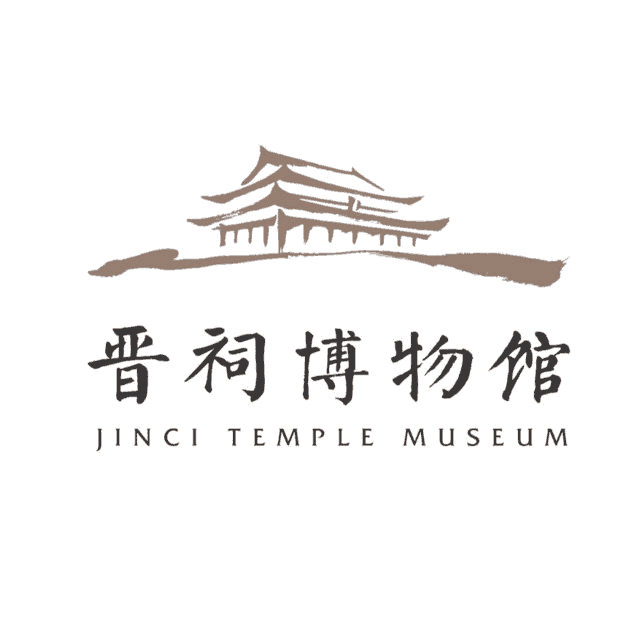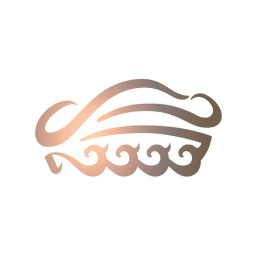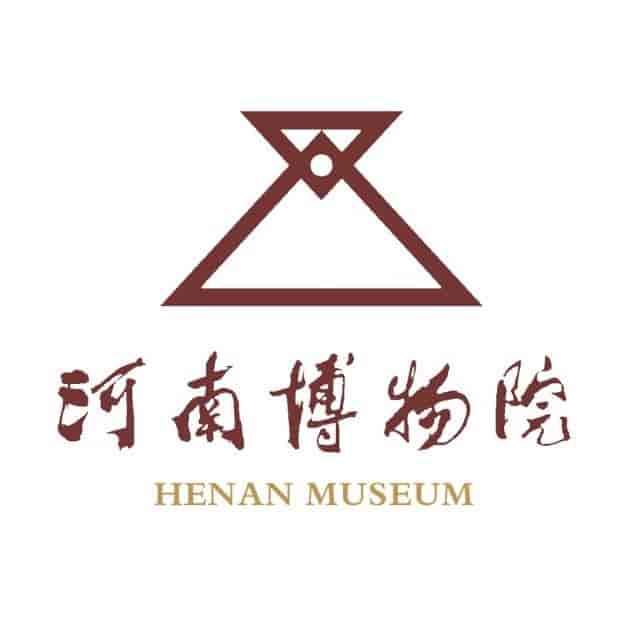










国立台湾博物馆成立于1908年,是台湾历史最悠久的博物馆,以自然史蒐藏为主要特色。当时的日本和西方国家,对于博物馆的想像经常是从殖产兴业的展示作为出发点,这也是为何台博馆一开始是由总督府工商部门或殖产部门负责的背景。1908年台博馆前身「台湾总督府民政部殖产局附属博物馆」(以下简称总督府博物馆)的成立,是为了庆祝本岛交通大动脉纵贯铁路之南北全缐通车,做为一系列空前盛大的通车仪式活动之一,准备透过展览大力宣传与介绍台湾的建设。这部份的工作就交给殖产局,计画展出台湾本岛各项产业的缩影,让来宾对台湾的概况能够一目瞭然。一开始就参与整个展览会和博物馆筹划工作的森丑之助就直接点明:「纵贯铁路的全缐开通,才是产生这座博物馆的唯一动机。」
在展览活动积极筹备过程中,台湾总督府有一栋正在兴建中的建筑,准备作为彩票局办公之用,其地点位于当时尚未完成的总督府建筑基地(1919年完成)隔街后方,即今法务部廉政署所在地。台湾总督府原来就有发行彩票,曾经造成日本国内购𧹒潮,而引起一些舆论反对,最后使得日本议会取消了彩票法令,这座兴建中的彩票场因此失去使用目的。起初总督府将之借给殖产局商工课使用,准备在铁路全缐通车庆祝活动中作为临时性的产业展览场地,当时也有期待未来可以做为殖产局的常设标本室。原计画中的「产业标本展览会」就这样移入彩票局馆舍,成为「台湾总督府民政部殖产局附属博物馆」。原来只为庆祝纵贯铁路通车典礼的临时展览会,变成了永久性的博物馆陈列展示。「博物馆」的名称、概念、空间和体制,就这样有些预料之外地在台北诞生。
而当时由彩票局局长转任殖产局局长的宫尾舜治说到:「这个殖产局博物馆到底是什麽呢?虽说不像展览会、也不像博览会或产业博物馆,但其目的绝不像外观规模那麽小。我认为这座博物馆是一所自然科学的博物馆,将所有关于台湾的动植物、矿物全蒐集起来并好好利用它们达到博物馆的目的。其次才是把昔日消失的历史文物陈列出来,使人一目了然。虽然难免疏漏,但以此为基础,对以后十年二十年五十年的世界学术是有贡献的。如有外国人来台考察,而在此具备文明组织及设备之台北,而无可藉以知其产物之博物馆,且无可因而识其历史变迁之陈列所,那麽他们必以轻忽侮慢之眼看我台北市。想到这裡,就往往会令人感伤,这是为什麽要努力蒐集的原因。」
这裡我们看到一开始就倾向于自然科学博物馆为主的思维,而且意识到博物馆作为一种文明标识的重要性。1908年前后,日本各地的公共博物馆案例并不多,但是台湾已有台南及台北两座博物馆,虽然规模和收藏无法与当时日本帝室博物馆和教育博物馆相比,但以诞生的时间来说可算相当早。侭管博物馆的行政归属一直在变化,人事预算也都非常欠缺,但自然史方向却出人意料地持续展开。
台博馆1908年开馆时的陈列品主要分为地质鑛物、植物、动物、人类器用、历史及教育资料、农业材料、林业资料、水产物、鑛业资料、工艺品、贸易类等,加上其他共十二类。这些项目大致分属于三个范畴:自然史、工艺产业和历史文物。
标本数量总数12,723件,属于自然史的标本占了全部的四分之三,产业标本则占四分之一。两年之后的1910年,标本数又增加了近四千件,总数达16,806件。根据当时相关之报导和参与者之回忆,我们约略可以重建开展之现场佈置:「进了大门之后,首先引人注目的是林产部份,大空间裡以富丽堂皇的蓪草造花盒子为中心,四周为各种产业模型,旁边是农产标本,有个高台放置著这栋建筑的原初主人,彩票抽签器。有一间专门陈列工艺品标本,另有一间展示一些历史相关资料。二楼入口大门上方有动物、左边有昆虫和植物,右侧有水产的陈列,扶手的转弯处是从蕃人没收的废枪五百枝,作为讨蕃纪念而展示的。儿童室的上方陈列著蕃族之土俗品,其中作为贵宾室的一个角落有植物腊叶标本的陈列。事务室上面一个房间展示地质矿物,蕃俗室的墙壁挂有两幅从警察本署送来的石川钦一郎所绘隘勇缐油画,一幅以东势的北势蕃地马拉蕃山为中心,另一幅以大溪枕头山为中心,各画出该地区地势山窟的情形。」
「一楼陈列农林产物暨输入品,除日本产物之外,各官衙各会社所出品者,另外是藤田组精炼所模型(五十分之一)、金瓜石精炼所模型(四十分之一)和盐田之模型等。参考室则广列有关台湾岛历史文物,主要来自地方州厅的提供,但是要尽网罗则相当费苦心,甚不容易。」
当时报导特别称讚:「此博物馆实可视为科学大博物馆之进阶,场地虽不免狭小,但能蒐集各种材料,备极陈列之巧,也可见经营之用心。」不过,显然仍局限在制式的产品陈列方式,因此也有这样的批评:「有关自然科学,如要以纯正科学的方式展示,以当时而言还是非常困难的。结果成为产业馆式的展示样式,实属不得已的事情,但相信已充分表达了本岛的自然情形。」
National Taiwan Museum, established in 1908, is the oldest museum in Taiwan. The Japanese government wanted to commemorate the opening of the west coast railway and so established the Taiwan Governor Museum on October 24, 1908. At its opening, there were more than 10,000 pieces of collections in the museum. In 1913, funds were collected to build the Governor-General Kodama Gentaro and Chief Civil Administrator Goto Shinpei Memorial Museum at current site. In 1915, after two years of construction, the museum was completed. It is one of the most noteworthy public buildings in Taiwan.
After the relocation of the National Government of the Republic of China to Taiwan in 1949, the museum came under the jurisdiction of the Provincial Department of Education and its name was changed to Taiwan Provincial Museum. In 1961 and 1994, the museum was closed forextensive renovations. In 1999, the museum came under the supervision ofthe central government and renamed as National Taiwan Museum.Although its name has changed thought out the times, the museum is the only museum built in Japanese colonial era that, after wars and changes in government, remains open at its original site.
The museum was designed by Japanese architect Ichiro Nomura and Eiichi Araki. The construction was carried out by the company Takaishi Gumi. The structure itself is reinforced concrete (RC) with load-bearing brick walls. RC was an advanced technology in the early 20th-century in Taiwan. The roof was made of cypress and covered with copper tiles.
Standing before the museum, it seems to consist of only two stories. The base of the museum, however, is one story high, meaning that the museum is actually a 3-floor building. Originally, administration and service space was set on the first floor and exhibitions were restricted to the second and third floors, the ceiling height of the first floor being less than the second and third floors because the second and third floor are used as the area for exhibitions. The main hall at the center of the building is flanked by two exhibition halls. The colonnade and balcony were constructed on the south facade of the museum due to the subtropical climate of Taiwan.
With its Greek temple facade and Pantheon-like vaulted ceiling, the museum was constructed in classical style. The building can be divided into three parts: the base, the walls, and the roof. The base is raised for a bigger room on the first floor and lend majesty to the structure. The walls are composed of columns, with Renaissance-style windows. The roof is a dome and the gable is decorated with gorgeous flower and leaf patterns. These, together with the huge classical Doric hexastyle columns supporting the portico, create a solemn and sacred atmosphere. From a distance, the 30-meter-high dome appears to float above the surrounding trees and becomes the center of attention.
Walking into the museum, you will find an elegant Renaissance-style hall. In Taiwan, it’s hard to find a building that the interior and exterior are done in different styles. This is called eclecticism, an approach that involves various paradigm by need. The main hall of the museum is surrounded by 32 Corinthian columns whose capitals boast exquisite acanthus and volute patterns. The grand staircase at the main hall is also eye-catching.
Looking up at the 16-meter high ceiling, the light spills evenly through the stained glass windows between the double vaults into the hall. This design is similar to that of a Gothic church where light and shadow create a sacred atmosphere. At the time the museum was built, bronze statues of Governor-General Kodama Gentaro and Chief Civil Administrator Goto Shinpei were placed in the alcoves of the lobby. A pattern combining the family coat-of-arms of the two officers was used in the stained glass and lamps, showing the commemorative purpose behind the building of the museum.The exterior wall is decorated with washed pebbles to imitate the texture of stone architecture. The stairs and handrails of the interior are of marble imported from Japan. Black marble and white calcite were used on the interlaced floor, making Taiwan a pioneer in using marble as the main building material. Splendid clay sculptures were installed around the interior doors and windows as well as in alcoves. In addition to popular European floral patterns, these sculptures also showcased Taiwanese elements such as the wax apple, banana, and star fruit.
For over a century, the museum has been standing in front of the Taipei Railway Station, on the north-south and east-west pivotal crossroads of old Taipei in Qing dynasty. Its elegant architecture, rich collection, and unique geographical position have made the National Taiwan Museum an important landmark in Taipei. In 1998, the Ministry of the Interior designated the museum as a National Historic Site. From the colonial-era Taiwan Governer Museum to the National Taiwan Museum today, the building has witnessed the history of Taiwan and also recorded the natural and anthropological development of this land. At the museum, visitors can witness the tracks of development and the many splendors of Taiwanese culture, geology, flora, and fauna.
Today, the museum retains the scale it had when it opened. The collection and research continue to focus on the research of anthropology, earth sciences, zoology, and botany. Through themed exhibitions, educational activities, publications, and various cooperation plans, the museum has achieved its educational goal in the society to welcome and serve the public.
参观
开放时间 / Opening hours
周二到周日每日9:30 – 17:00(闭馆前30分钟停止售票服务)
Tuesday-Sunday: 9:30 am-5 pm (Ticket Booth Hours : 9:30 am – 4:30 pm)
*逢国定假日及连续假期均照常开馆。
*每週一、除夕及春节初一休馆。
Closed on Mondays, the Eve and the first day of the Lunar New Year
Open on national and consecutive holidays
购票信息 / Tickets
全票:每张 30元|半票:每张 15元
四馆联票 全票:130元 |半票:65元
会员卡 全票:300元
- 半票优待:学生、6至12岁儿童,年满65岁以上的民众假日半票,机关学校团体二十人(含)以上(须一週前网路预约申请)
- 免票优待:未满六岁之学龄前儿童,年满六十五岁以上的民众平日免费.身心障碍者及其陪同者一人,持中华民国博物馆学会、ICOM、AAM会员卡(证),持志愿服务荣誉卡,以上均凭证(函)优待
- 凭会员卡于一年有效期限内无限次参观本馆、古生物馆、南门馆及铁道部园区,享有会员专属权益
- 凭四馆联票可于购票日起一个月内参观本馆及古生物馆、南门馆及铁道部园区一次
- 台博馆本馆及古生物馆一次购票(当日)可参观两馆。
- 提供悠游卡、信用卡、台湾Pay购票服务
- 台博馆门票票根好好用~馆际合作优惠请按此
The combined ticket is valid for admission to both the main Museum and and Natural History Branch.
NT$30 Regular / NT$15 Discount
Four Branch Combo Ticket
NT$130 Regular / NT$65 Discount
Membership Card
NT$300
Half-price admission for the following visitors with ID (letter)
Students
Age of 6 to 12
Age of 65 and above (holiday)
Public groups of 20 or more persons (online reservation is required one week in advance of the visit date.)
Free admission for the following visitors with ID (letter):
Under the age of 6
Age of 65 and above (weekday)
Disabled visitor and their accompanying person
Member of Taiwan Museum Association, ICOM, or AAM (membership card holder only)
Holder of Volunteer Service Honor Card issued by an approved Taiwanese institution
Easycard、Credit Card、TaiwanPay are available at every branch of NTM.
门票购票及退票注意事项
- 请凭票面所载展馆、日期入馆,逾时作废。
- 持优待或免费票券,请备妥有效证件,方得享有优惠。
- 本票券视同无记名有价证券,票券如发生遗失、破损及无法辨识等情形,恕不补发、退换,请持票人善尽保管之责。
- 未使用之票券,如需申办退票,请于售票服务台办理。以原购票方式退还,不收手续费。
惟以信用卡、行动支付、悠游卡购票,以及持悠游卡于闸门感应入馆者,遇馆方网路断缐、停电时,改以现金退票。若使用悠游卡后已穿插其他交易者亦以现金退票。 - 教育参观劵:
(一)、本券视同无记名有价证券,可凭券面所载展馆、期限,于售票服务台免费兑换票券入馆参观,使用后由售票服务台人员回收。
(二)、本券使用期限為发券日起一年内。
(三)、如发生遗失、破损及无法辨识等情形,恕不补发、退换,请持票人善尽保管之责。 - 若有未尽事宜,国立台湾博物馆保留修改权利,以官网公告為准。
- 有关购票相关消费争议处理,请洽售票服务台办理。
- 已作废票券不可办理退票。
- 已𫔭立购票证明之票券如须变更/退票,应併同本证明办理,票券一经退票后,原购票证明即视同无效。
Admission Ticket Ticket-Return Information
Tickets are valid only for the venue(s) and the date stated upon them. The expired ticket will be void.
Tickets are unregistered marketable securities. No returns, reissues or exchanges will be given to lost, damaged, burned, and unrecognizable admission tickets. During your visit please retain your tickets.
For guests eligible for free or discount tickets, please show your valid ID or certification to verify prior to entry.
Any unused, undamaged ticket may be returned for a full refund without any commission fee. To apply for a ticket refund, please go to the ticketing counter of the information desk.
The National Taiwan Museum reserves the right to changes the terms, at any time and to notify you by posting an updated version on the official website.
If you need help with a consumer problem, please contact the staff at the ticketing counter of the information desk.
参观须知 / Visiting Notes
- 请勿于馆内吸烟、饮食、奔跑嬉戏及其他有安全疑虑之行為。
- 请勿携带食物、液体、伞具、危险物或易燃物入馆。
- 请依规定购票,接洽公务者请至馆前行政大楼。
- 服装不整、携带宠物者(导盲犬除外)谢绝入馆。
- 请勿使用闪光灯、脚架、自拍棒等可能影响参观之摄影器材,并禁止做任何未经许可之商业及出版使用。
- 本馆大门口备有身心障碍专用电梯。
- 华语定时导览AM10:30、PM2:30。
- 提供寄物收纳柜:大置物柜40*40*80cm、小置物柜40*40*40cm
- No smoking, drinking or eating in the Museum; drinking and eating is only allowed in the food and beverage service area.
- No dangerous items or combustible materials are allowed in the Museum.
- Please purchase admission tickets. For official purposes, please visit the administration building of National Taiwan Museum.
- Visitors with improper attire or pets (exception of guide dogs for the blind) are prohibited.
- No flash and camera supports for photography; any commercial use or publication of the images is prohibited.
- Audio guided tour is available for the visually-impaired visitors at Land Bank Exhibition Hall.
交通 / Traffic
- 步行 / Walk
从台北车站M5出口步行约10分鐘或可搭乘台北捷运在台大医院站4号出口出站。 - 公交 / Bus
博物馆(襄阳):20, 222, 236, 236夜, 251, 513, 621, 644, 651, 670, 仁爱干缐
博物馆(馆前):0东, 18, 236, 236夜, 251, 605, 605副, 605快, 605新台五
台北车站(公园):0东, 1717, 37, 5
捷运台大医院站 :0东, 18, 2, 20, 222, 236, 236夜, 251, 295, 37, 5, 513, 588, 604, 621, 644, 648, 651, 670, 88, 仁爱干缐
重庆南一路:15, 18, 22, 220, 220直, 236, 236夜, 247, 251, 257, 276, 300, 605, 605副, 605快, 605新台五, 644, 670, 内湖干缐
二二八和平公园:15, 18, 22, 220, 220直, 247, 257, 276, 300, 513, 621, 内湖干线
- By MRT
Take the Tamshui-Xinyi Line, Line 2 or Red Line to NTU Hospital Station Exit 4, then walk for 3-5 minutes crossing the 228 Peace Park to the Museum.
Take the Bannan Line, Line 5 or Blue Line to Taipei Railway Station Exit 5, then walk to Xiangyang Road along Guanqian Road for about 5 minutes.
For more information, visit the website of Taipei Rapid Transit Corporation - By BUS
Take the bus to one of the stops: Taiwan Museum (Quanqian Rd.), Taiwan Museum (Xiangyang Rd.), MRT NTU Hospital Station, or Taipei Main Station (Zhongxiao), then walk for 3-5 minutes.
For more information, visit the website of Taipei Bus Information and Transit System. - By Ubike
Ride the UBike and stop at the Exit 4 of MRT NTU Hospital Station on Gongyuan Road, then walk for 3-5 minutes crossing the 228 Peace Memorial Park to the Museum.
For more information, visit the website of YouBike. - Walk from Taipei Station
The Museum is near the Taipei Station, conveniently accessible by metro, bus, train or HSR.
Along Guanqian Road, it takes about 5 minutes to walk from Taipei Station to Xiangyang Road.
联系
国立台湾博物馆 / National Taiwan Museum
地址 / Location
中国台湾省台北市中正区襄阳路2号 (二二八和平公园内)
No. 2, Xiangyang Rd., Zhongzheng Dist., Taipei City, Taiwan, China
邮编 / Zip code
100007
总机:(02) 2382 2566
古生物馆 / Natural History Branch
地址 / Location
中国台湾省台北市中正区襄阳路25号 (台博馆斜对面)
No. 25, Xiangyang Rd., Zhongzheng Dist., Taipei City, Taiwan, China
邮编 / Zip code
100007
电话 / Tel
(02) 2314 2699
南门馆 / Nanmen Branch
地址 / Location
中国台湾省台北市中正区南昌路一段1号
No. 1, Sec. 1, Nanchang Rd., Zhongzheng Dist., Taipei City, Taiwan, China
邮编 / Zip code
100035
电话 / Tel
(02) 2397 3666
铁道部园区 / Railway Department Park
地址 / Location
中国台湾省台北市大同区延平北路一段2号
No. 2, Section 1, Yanping North Road, Datong Dist., Taipei City, Taiwan, China
邮编 / Zip code
103011
电话 / Tel
(02) 2558 9790
行政大楼 / Administration Building
地址 / Location
中国台湾省台北市中正区馆前路71号5楼
5F., No. 71, Guanqian Rd., Zhongzheng Dist., Taipei City, Taiwan, China
邮编 / Zip code
100011
电话 / Tel
(02) 2382 2699






